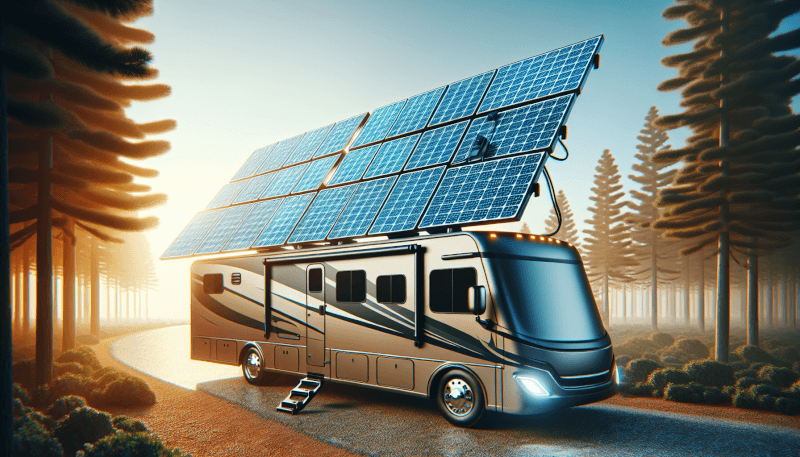Thinking about going on a camping trip with your RV? One thing you definitely don’t want to forget is your handy RV Camping Solar Panels. In this article, we will provide you with essential tips on how to install and use these panels effectively. From finding the perfect location for installation to maximizing energy efficiency, we’ve got you covered. So, get ready to power up your RV with the sun’s energy and enjoy a hassle-free camping experience like no other.
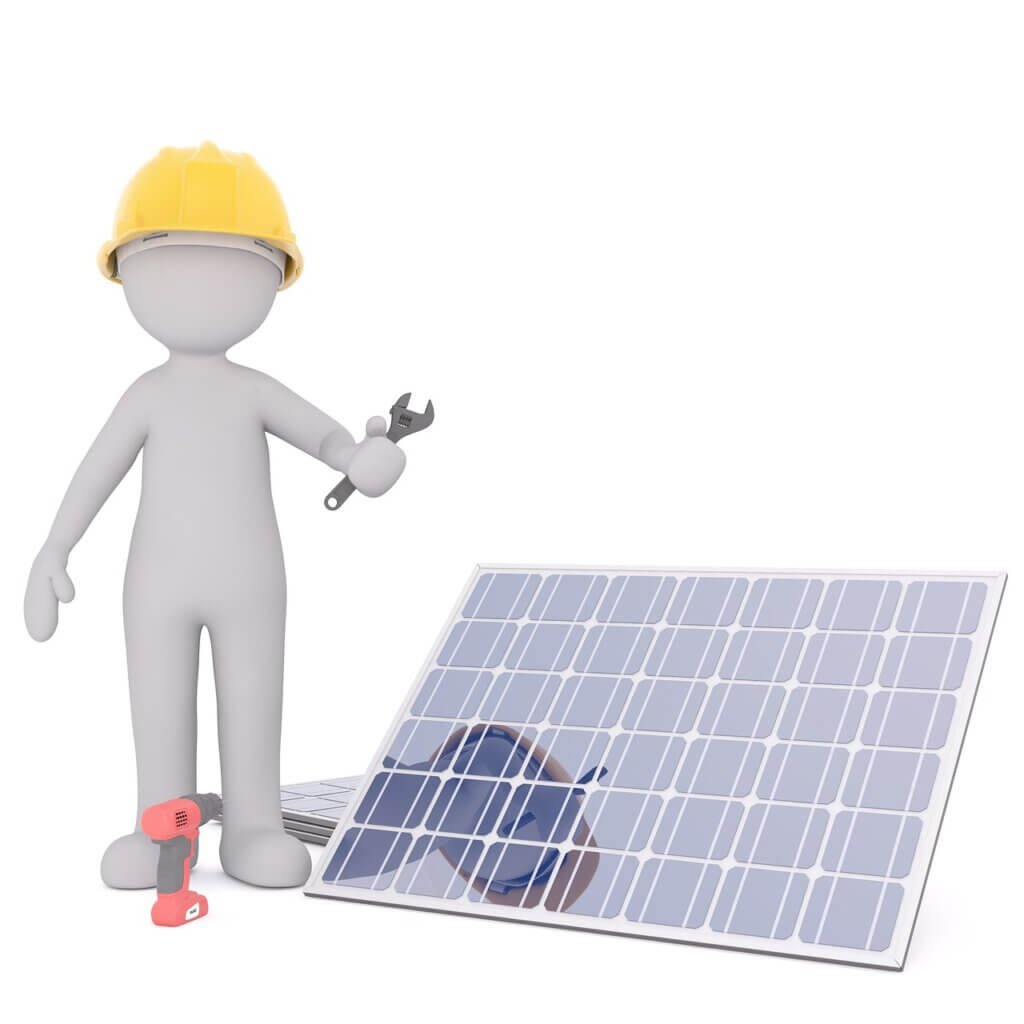
Choosing the Right Solar Panels
When it comes to choosing the right solar panels for your RV, there are a few important factors to consider. First, you need to assess the power needs of your RV. Consider the appliances and devices that you will be using and estimate their energy consumption. This will help you determine the capacity of the solar panels you will need.
Next, you need to determine the available roof space on your RV. Solar panels require a certain amount of space to be installed properly and receive optimal sunlight. Measure the available space on your roof and ensure that it is suitable for the size and number of solar panels you plan to install.
Another important consideration is the type of solar panels you want to use. There are different types available, such as monocrystalline, polycrystalline, and thin-film panels. Each type has its own advantages and disadvantages, so it’s important to do some research and choose the one that best fits your needs and budget.
Finally, it’s crucial to review the efficiency and power output of the solar panels you are considering. Higher efficiency panels convert more sunlight into electricity, while panels with higher power output produce more electricity. Consider the climate and weather conditions of the areas you will be traveling to, as these factors can affect the performance of your solar panels.
Calculating Power Requirements
To ensure that your RV solar panel system can meet your power needs, it’s important to accurately calculate your power requirements. Start by assessing your energy consumption. Take a look at the appliances and devices you plan to use and estimate how many hours per day you will be using each of them. Multiply the power consumption (in watts) of each device by the number of hours you plan to use it to get the energy consumption (in watt-hours).
Once you have determined your energy consumption, you can calculate the solar panel capacity needed. To do this, divide the total energy consumption per day by the number of hours of sunlight you can expect to receive. This will give you an estimate of the solar panel capacity (in watts) needed to generate enough electricity to meet your daily energy requirements.
It’s also important to factor in battery efficiency and charging losses. Batteries are not 100% efficient in storing and releasing electricity, and there may be losses during the charging process. Consider these losses and factor them into your calculations to ensure that your system can provide enough power even with these inefficiencies.
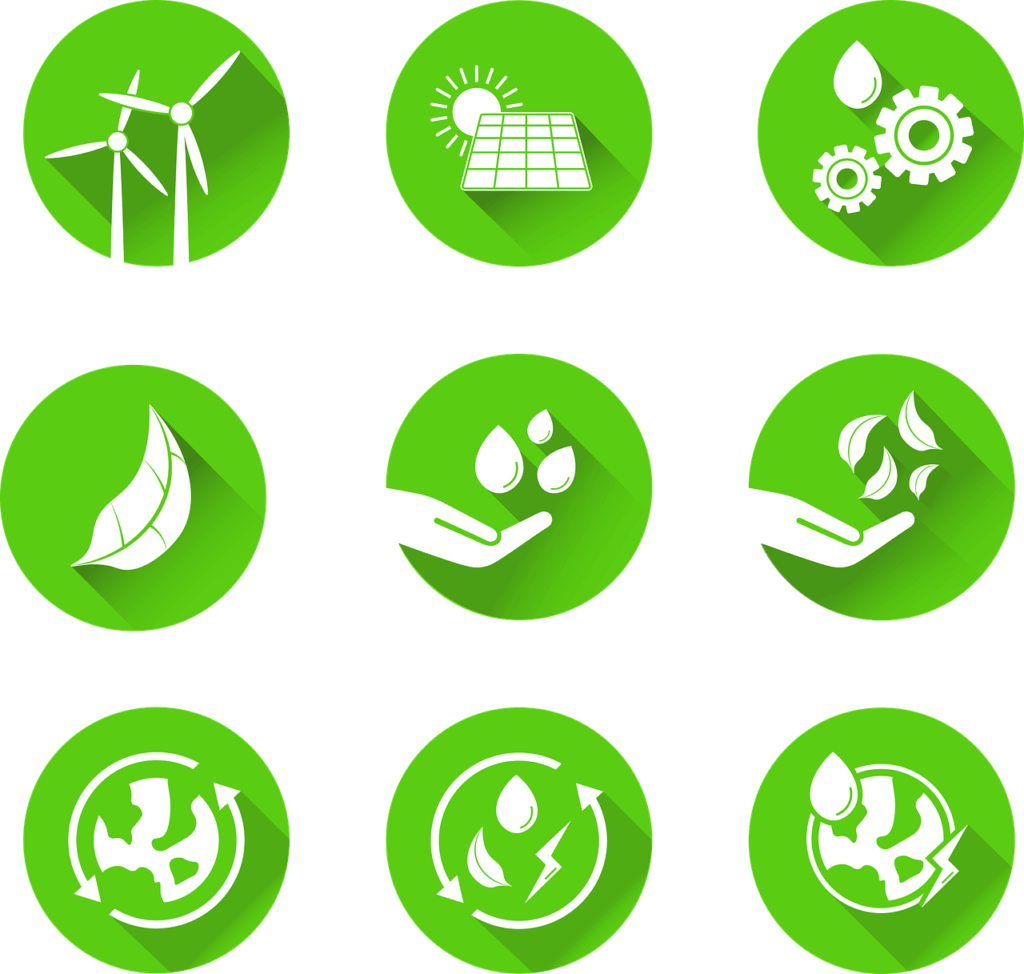
Preparation for Installation
Before installing the solar panels on your RV, there are a few important steps to take to prepare for the installation process. First, inspect the condition of your RV roof. Ensure that it is in good shape and can support the weight of the solar panels. Check for any leaks or damage that may need to be addressed before installation.
Next, check for shade and obstacles that could block sunlight from reaching your solar panels. Trim any overhanging branches or remove any obstacles that could reduce the efficiency of your panels. Maximizing sunlight exposure is crucial for optimal performance.
Calculate the optimal tilt and orientation for your solar panels. The angle and direction your panels face can greatly affect their efficiency. Consider the latitude of your location and adjust the tilt and orientation accordingly to maximize solar exposure.
Finally, evaluate the roof mounting options for your solar panels. There are different types of mounts available, such as fixed mounts, tilt mounts, and adjustable mounts. Choose the one that best suits your needs and preferences, considering factors like ease of installation and adjustability.
Installing the Solar Panels
When it comes to installing the solar panels on your RV, it’s important to take proper precautions and follow safety measures. Make sure to turn off all electrical power sources and wear safety gear, such as gloves and safety glasses, before proceeding with the installation.
Mount the solar panels securely on your RV roof. Use appropriate mounting hardware and ensure that the panels are firmly attached to avoid any movement or damage while traveling. Double-check the tightened screws and brackets to ensure the panels are secure.
Next, make the necessary wiring connections and install a charge controller. Connect the positive and negative wires from the solar panels to the charge controller, and then connect the charge controller to the battery bank. The charge controller regulates the flow of electricity and prevents overcharging or damaging the batteries.
Proper grounding and surge protection are also essential. Consult the manufacturer’s instructions and follow the recommended grounding techniques to ensure the safety of your solar panel system. Install surge protectors to protect your system from any power surges or lightning strikes.

Battery Setup and Configuration
Selecting the right battery type for your RV solar panel system is crucial for efficient energy storage. There are various types of batteries available, such as lead-acid, lithium-ion, and gel batteries. Consider factors like cost, lifespan, and maintenance requirements when choosing the battery type that best suits your needs.
Determining the battery capacity needed is also important. Calculate the total energy consumption per day, taking into account any energy losses and inefficiencies, and multiply it by the number of days you want your batteries to last without recharging. This will give you an estimate of the battery capacity (in amp-hours) needed for your system.
Properly wiring the battery bank is essential for optimal performance. Follow the manufacturer’s instructions and connect the batteries in parallel or series, depending on your system requirements. Use appropriate cables and connectors to ensure a secure and efficient connection.
Configuring the charging system is the final step of the battery setup. Adjust the settings of your charge controller to match the battery type and desired charging parameters. Consult the manufacturer’s instructions or seek professional advice if you’re unsure about the configuration process.
Monitor and Control Systems
Installing a solar charge controller is essential for monitoring and controlling the charging process of your RV solar panel system. The charge controller regulates the flow of electricity from the solar panels to the batteries and prevents overcharging or damaging the batteries. Choose a charge controller with a built-in display to easily monitor the system’s performance.
Adding a battery monitor to your system is also beneficial. It allows you to keep track of the battery’s state of charge and voltage levels, giving you valuable information about your energy storage capacity. A battery monitor can help you optimize your energy usage and prevent over-discharging the batteries.
If you plan to use AC power in your RV, installing an inverter is necessary. An inverter converts the DC power stored in your batteries into AC power, allowing you to use appliances and devices that require AC power. Select an inverter with the appropriate power rating and follow the manufacturer’s instructions for installation.
Using remote monitoring systems can also enhance your RV solar panel experience. These systems allow you to monitor and control your solar panel system remotely through a smartphone app or online portal. You can check the system’s performance, adjust settings, and receive notifications about any potential issues, all from the convenience of your smartphone.
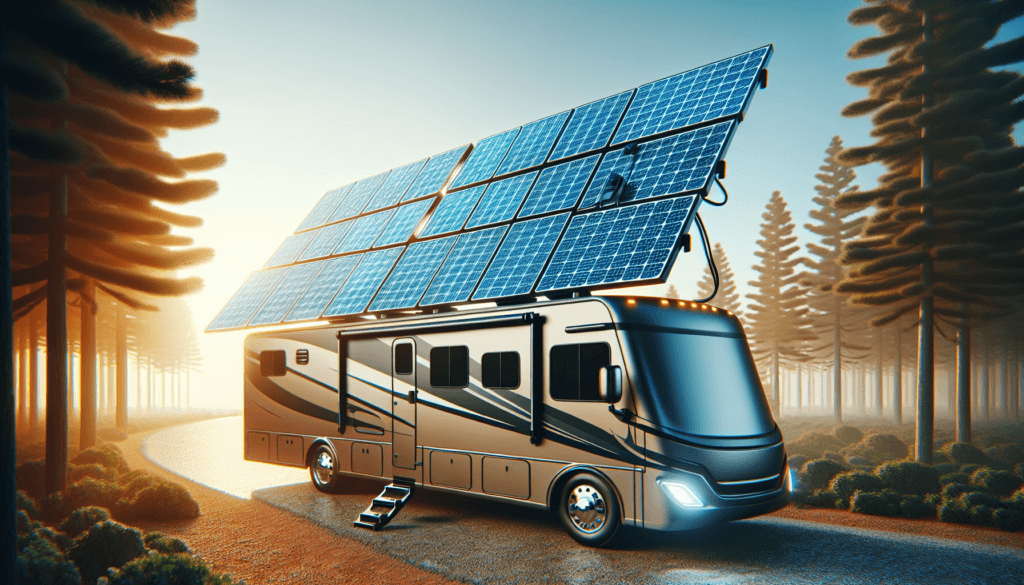
Maintenance and Care
To ensure the longevity and optimal performance of your RV solar panel system, regular maintenance and care are essential. Start by cleaning the solar panels regularly to remove any dirt, dust, or debris that may reduce their efficiency. Use a soft cloth and a mild cleaning solution to gently wipe the surface of the panels. Avoid using abrasive materials or harsh chemicals that could damage the panels.
Inspect the wiring connections periodically to ensure they are secure and free from any corrosion or damage. Tighten any loose connections and replace any damaged cables or connectors. Faulty wiring connections can affect the performance of your system and potentially lead to safety hazards.
Testing and replacing batteries when necessary is crucial for maintaining the efficiency of your system. Periodically test the batteries to check their capacity and voltage levels. If you notice a significant decrease in capacity or voltage, it may be time to replace the batteries.
Addressing common issues promptly is important to prevent further damage to your system. If you notice any abnormal behavior or performance, such as reduced power output or unusual noises, consult the system’s manual or seek professional assistance. Delaying repairs or maintenance can lead to costly repairs or system failures.
Optimizing Solar Panel Performance
Maximizing solar exposure is key to optimizing the performance of your RV solar panel system. Park your RV in locations that receive ample sunlight throughout the day. Avoid parking in shaded areas or under trees that can block sunlight from reaching your panels. Position your RV to face the sun and adjust the tilt and orientation of your panels accordingly.
Using portable solar panels can be a great way to supplement your RV solar panel system. Portable panels allow you to set them up away from your RV to maximize solar exposure. They can be especially useful if you need to park your RV in a shaded area or if you need additional power during your outdoor activities.
Adding additional solar panels to your system can also increase its power output. If you find that your current system’s capacity is not sufficient to meet your power needs, consider adding more panels. Ensure that your RV roof has enough space and that your charge controller and battery bank can support the additional panels.
Optimal power management is crucial for efficient energy usage. Use energy-saving appliances and devices whenever possible, and be mindful of your energy consumption. Turn off or unplug devices when not in use, and prioritize power usage based on your needs. Efficient power management can extend your battery life and reduce the need for external power sources.
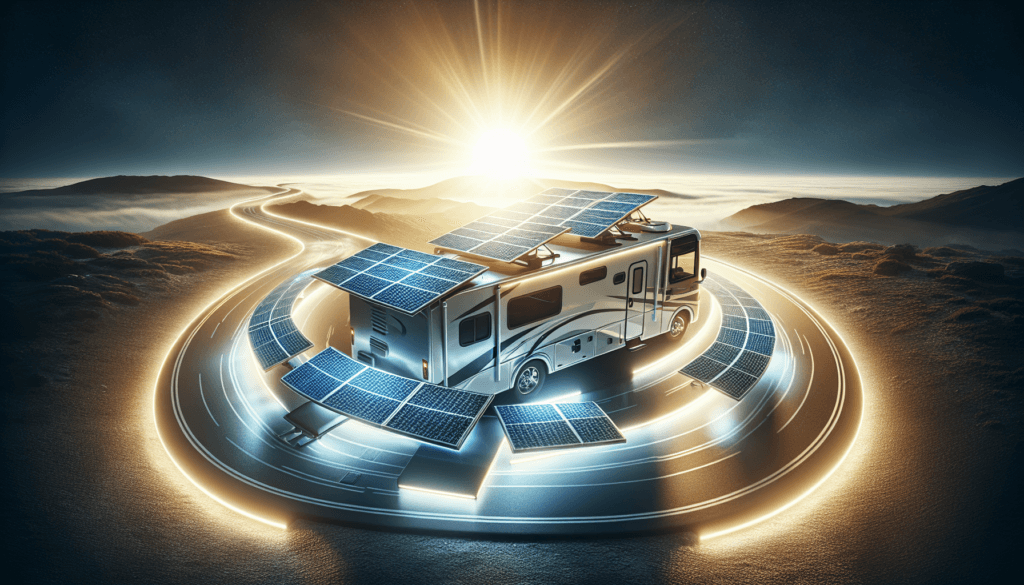
Using Solar Power in RV Camping
When using solar power in RV camping, it’s important to understand the power limitations of your system. Solar panels can provide ample power for lighting, charging small devices, and running low-energy appliances. However, they may not be able to support high-demand appliances like air conditioners or electric heaters.
Optimizing appliance usage can help you make the most of your solar power. Choose energy-efficient appliances, such as LED lights and low-power electronics. Plan your power usage by scheduling high-energy activities during peak sunlight hours. By distributing the energy consumption throughout the day, you can maximize the power provided by your solar panels.
Charging devices efficiently can also help conserve energy. Use solar chargers for your portable devices, such as phones and tablets, instead of relying on traditional outlets. These chargers utilize the power from your solar panels and can be more energy-efficient than using an inverter to convert DC power to AC power.
Managing energy storage and usage is crucial in RV camping. Keep a close eye on your battery levels and adjust your power usage accordingly. Avoid over-discharging the batteries as this can reduce their lifespan. Use battery-powered lights and fans during the night to conserve energy.
Storage and Transport Considerations
When it comes to storing and transporting your RV with solar panels, there are a few important considerations to keep in mind. Before traveling, secure the solar panels properly on your RV roof. Use appropriate mounts and hardware to ensure that the panels are stable and will not shift or get damaged during transit.
During storage, protect the solar panels from harsh weather elements. If possible, cover the panels with a protective cover or tarp to prevent any damage from rain, snow, or excessive sunlight. Regularly inspect the covers for any signs of wear or damage and replace them when necessary.
Properly store your batteries when your RV is not in use. Disconnect the batteries from the system and store them in a cool and dry location. Check the battery levels periodically and recharge them if necessary to maintain their health and prevent deep discharge.
When transporting your RV with solar panels, be cautious of low-clearance areas or branches that could damage the panels. Plan your routes carefully and be mindful of any height restrictions. If you are unsure, consult your RV manufacturer or seek professional advice to ensure safe transportation of your solar panel-equipped RV.
In conclusion, choosing the right solar panels and properly installing and maintaining them can greatly enhance your RV camping experience. By considering your power needs, available roof space, and type of solar panels, you can select a system that meets your requirements. Calculating your power requirements, preparing for installation, and setting up the batteries and monitoring systems are crucial steps for a successful installation. With proper care, maintenance, and optimization, you can maximize the performance of your RV solar panel system and enjoy the benefits of solar power during your camping adventures.

